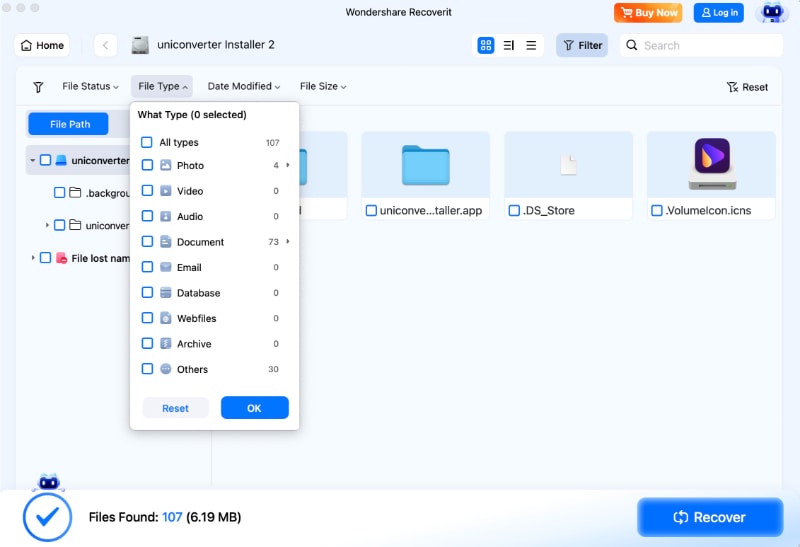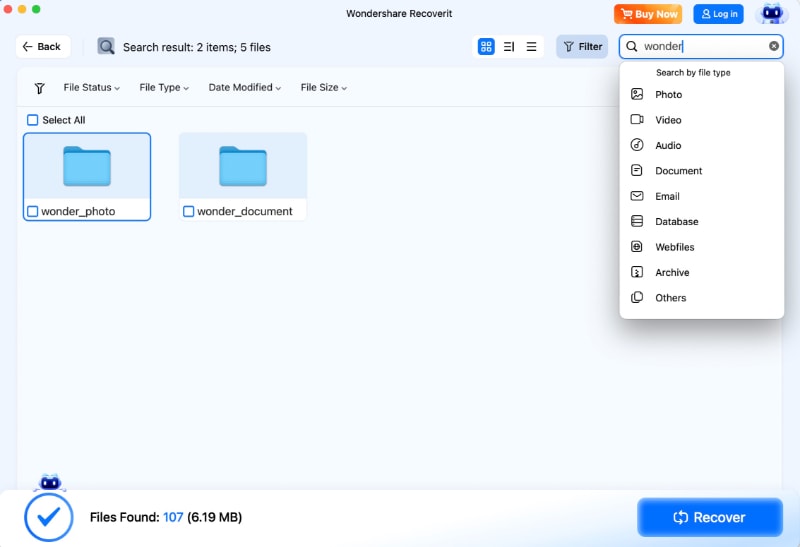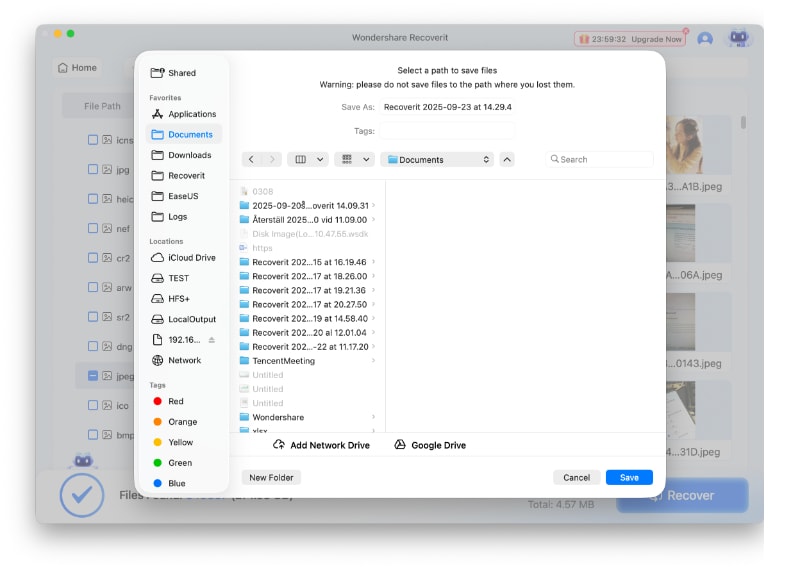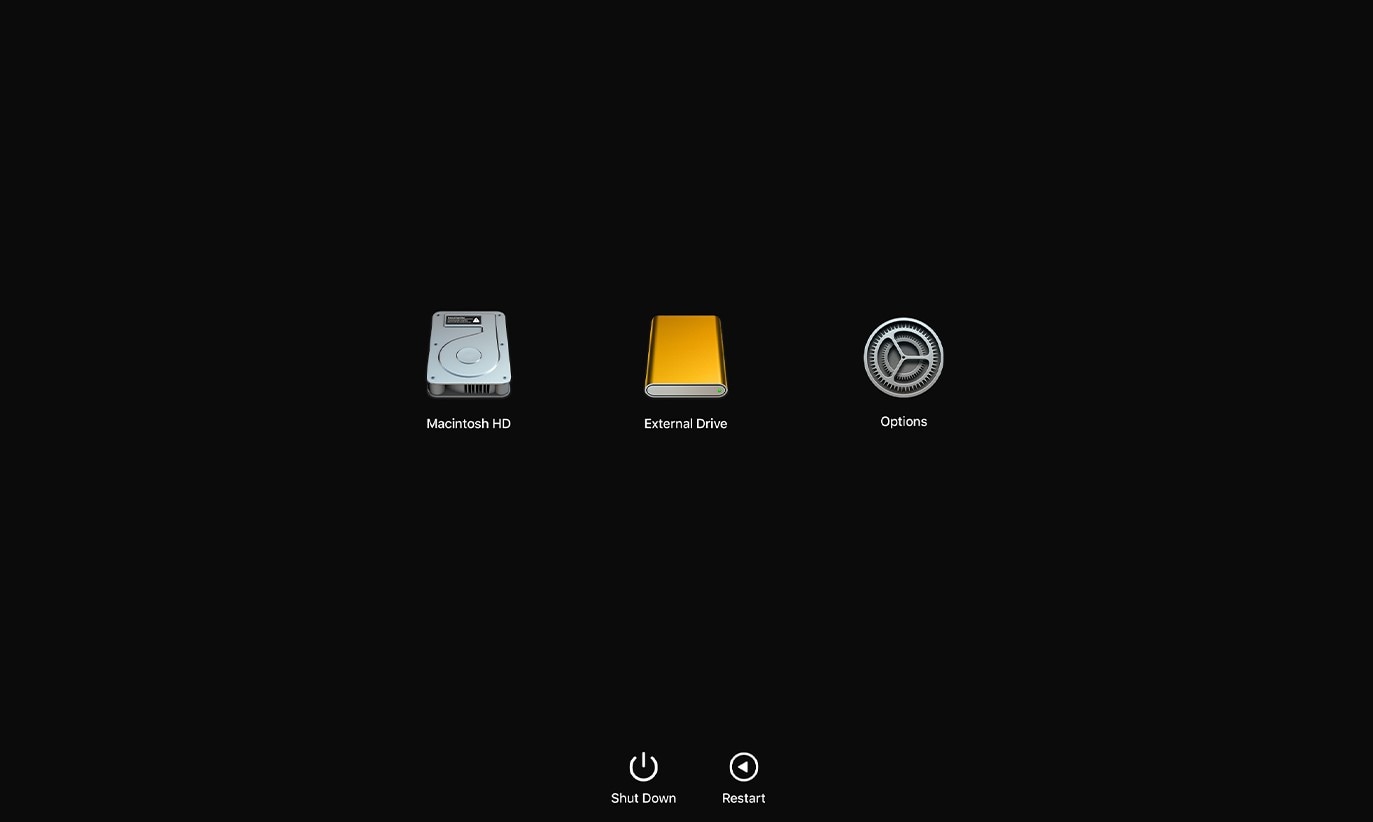A corrupted Mac hard drive can be a serious issue, often leading to system crashes, error messages, and the terrifying possibility of losing your personal files. Recognizing the early warning signs, such as sluggish performance, frequent freezes, or files that suddenly become inaccessible, is the first crucial step toward a solution.
This guide will provide clear, actionable methods on how to fix a corrupted hard drive on a Mac. We will cover everything from using macOS's built-in repair tools to more advanced techniques for data recovery, and we'll also give you essential tips to prevent this problem in the future.
Table of Content
Signs of a Corrupted Hard Drive on Mac
Before we jump into fixing corrupted Mac hard drives or recovering data from them, let's first see how you can tell your Mac hard drive is corrupted. Below is a table of the most widespread corrupted Mac hard drive signs and their solutions.
| Causes | Explanation |
| Frequent crashes and freezes | If your Mac frequently crashes, freezes, or becomes unresponsive, it could be an indication of a corrupted hard drive. |
| Slow performance | A corrupted hard drive can cause your Mac to run slower than usual, with longer startup times, slow file transfers, and sluggish application performance. |
| Inaccessible files and folders | If you're unable to open certain files or folders, or you receive error messages when trying to access them, it could be due to hard drive corruption. |
| Disk errors | If your Mac displays disk errors or error messages related to the file system, it could be an indication of a corrupted hard drive. |
| Trouble booting up | If your Mac is having trouble booting up, or you see the flashing question mark folder icon, it could be a sign of a corrupted hard drive or issues with the operating system. |
| Noisy hard drive | Unusual clicking, grinding, or whirring sounds coming from your hard drive could indicate physical damage or corruption. |
| Inability to mount or unmount volumes | If you're unable to mount or unmount an external hard drive or internal partition, it could be due to corruption. |
| Persistent S.M.A.R.T. status warnings | S.M.A.R.T. (Self-Monitoring, Analysis, and Reporting Technology) is a built-in diagnostic tool that monitors the health of your hard drive. If you receive persistent S.M.A.R.T. warnings, it could indicate corruption or an impending Mac hard drive failure. |
You may also be interested in: Best Hard Drive Recovery Software in 2025
How To Recover Data From a Corrupted Mac Hard Drive
Although repairing a corrupted Mac hard drive is effective in most cases, you could lose all your data in those rare few situations when a hard drive repair fails. Therefore, we highly recommend recovering data beforehand, and it'll prevent massive data loss if a repair fails.
Option 1: Use the Wondershare Recoverit Data Recovery Tool
Utilizing a reliable and dedicated data recovery tool for Mac from a trustworthy software developer is your safest bet to recover files from a corrupted hard drive on Mac. One good example is Wondershare Recoverit for Mac. With a success recovery rate of 95%, a corrupted Mac hard drive recovery will be no match for Wondershare Recoverit.
- Recovers data from 2000+ storage devices, including HDDs, SSDs, USB drives, SD cards, etc.
- Manages over 500 data loss situations, such as deletion, formatting, and disk corruption.
- The user-friendly interface allows you to recover data in just a few clicks.

Here's how to use it to recover data from corrupted hard drive on Mac:
- Download, install, and Launch Wondershare Recoverit on your Mac
- Select Hard Drives and Locations, and click the corrupted hard drive.

- The Recoverit app will automatically start scanning the drive for your files.

- If you don't need to recover all the files on the hard drive, you can adjust the search to focus on specific data

- The app also lets you add keywords to find the files you're after quickly.

- Preview the files that Recoverit found to check if they're in good condition. When you're ready, select the files you want to save and click Recover.

- Whether the scan has been completed or paused after the app found the files you were looking for, save the recovered data to a safe location.

Option 2: Recover via Time Machine
Another viable solution that can help recover your data from a corrupted hard drive on Mac is a system restore point with Apple's built-in Time Machine application. However, this solution is only effective if you've previously set up Time Machine backups and have an external hard drive or NAS device on which macOS creates backups of your startup disk.
If you have set up the Time Machine feature, follow these steps to recover files from a corrupted hard drive on Mac:
- Connect your external backup hard drive or NAS to the Mac.
- Open Launchpad, search for Time Machine, and start the app.
- Browse for a system restore point on the right side, and select the backup you want to recover.

- Choose the files you wish to recover and hit the Restore button.
Without an external hard drive or NAS to back up data to, Time Machine recovery won't work, and this fix will be useless.
Option 3: Contact a Professional Recovery Service
Time Machine backups and dedicated data recovery apps help restore deleted files and recover vital data. However, they're not effective in cases of physical damage to the hard drive. These instances usually include exposure to strong magnets, dropped Macs, and devices hit with a strong force.
At that point, you can only contact a professional recovery service, which can attempt to fix your physically damaged hard drive and recover your vital data for a hefty fee. However, severely damaged hard drives have a low chance of repair, and you might have to say goodbye to your files and purchase a new hard disk.
How To Fix a Corrupted Hard Drive on a Mac
Once you've recovered your vital files, you can dive deeper into the various troubleshooting steps and attempt to repair your hard disk on Mac. Below is a list of common fixes with detailed step-by-step guides, so let's dive right into these.
Fix 1: Check Your Finder Settings
Whether you've done it yourself or the operating system did it for whatever reason, hidden hard drives can cause massive and unnecessary confusion. However, fixing them is simple and only requires a few clicks. Here's how:
- Go to Finder > Preferences > General.
- Tick the Hard disks checkbox to show hard drives on the Desktop.

- Click the Sidebar tab and tick the checkbox next to Hard disks here, too.
If your issue was connected to hiding hard drives, these simple steps will fix it.
Fix 2: Repair HDD on Mac Using First Aid
Disk Utility is another excellent solution with multiple tools for repairing disk errors, including First Aid. Here's how to use it:
- Go into Applications > Utilities > Disk Utility.
- Click View and select Show All Devices.

- Select the problematic drive on the left, and click First Aid at the top of the screen.
- Click Run, let Disk Utility handle the error, and hit Done.
Fix 3: Repair a Disk on Mac Using the fsck Command
Occasionally, Mac hard drives will have bugs in their file system. That is where the fsck command comes into play. It stands for File System Consistency Check and does what the name suggests. Here's how to use it to fix a corrupted hard drives on Mac:
- Go to Applications > Utilities > Terminal and run the
diskutil listcommand.
- Note the problematic device and its identifier, as you must specify on which device to run the fsck command.
- Open Disk Utility next to the Terminal, select the corrupted hard drive, and Unmount it.
- Run the
sudo fsck -fy /dev/diskXsYcommand in the Terminal. Replacing X and Y with the problematic disk's identifiers is vital. - Once the fsck command completes, restart your Mac and mount the problematic drive from within Disk Utility.
Fix 4: Fix a Corrupted HDD on Mac Using Disk Format
Formatting erases all the data on the drive and creates a new file system. When dealing with a wrong format or corrupted hard drives, formatting the hard drive can help resolve the issue and bring your hard disk back to its former health. To format the corrupted hard drive on Mac, follow these steps:
- Open Launchpad and find Disk Utility.
- Select the hard drive and click Erase at the top of the screen.
- Add a name, select APFS or Mac OS Extended (Journaled) under Format, and choose GUID Partition Map under Scheme. Click Erase.

- Confirm the action when prompted and give the Mac a few seconds.
Remember that formatting the drive wipes it clean of any data; you shouldn't do it without saving vital files beforehand.
Fix 5: Fix a Corrupted Hard Drive on Mac Using Safe Mode
In addition to various software tools, Macs have a Safe Mode for dealing with unknown issues you must find and isolate. With Safe Mode, users can boot their Macs with only the essential apps to locate and eliminate the problem.
You can boot to Safe Mode with these steps:
- Shut down your Mac.
- Boot to Safe Mode with a combination of keys:
Intel-based Macs: Press the Power button, then press and hold Shift. Release the key once the login window appears, and log into your Mac.
Apple Silicon Macs: Press and hold Power until you see "Loading startup options." Select the hard disk with the OS, press and hold Shift, and choose Continue in Safe Mode

- After booting into Safe Mode, follow the steps in Fix 2 to check and repair the corrupted hard drive using First Aid.
- After using Safe Mode, restart your Mac by clicking the Apple menu and selecting Restart. Your Mac should now boot normally, and the hard drive issues should be resolved.
How To Ensure Your Mac Hard Drive Doesn't Get Corrupted in the Future
Corrupted hard drives and other disk-related issues are frustrating and time-consuming. Thus, it's essential to note that good habits can prevent these. Following these tips, you can ensure your Mac hard drive doesn't get corrupted again.
- Monitor Storage Drive: Although you can't physically see your Mac hard drive, you can monitor its health with various apps. These tools can tell you how healthy your hard drive is, its read and write speeds, and even how long it's expected to last.
- Prevent Exposure: Whether we're talking about viruses and malware or strong magnets, prevent the exposure of your Mac's hard drive to such forces and software. That way, you increase your data's safety and your hard drive's life expectancy.
- Back up Data: Mistakes happen. You accidentally delete and lose files, and hardware failure is not entirely preventable. In those cases, you want a safe and secure backup of your essential files, so regularly backing up data is vital.
- Safely Shut Down Your Device: Keeping your Mac turned on constantly isn't the most fabulous idea. Device shutdowns and restarts are crucial to its longevity and health. However, many users resort to closing the lid on a Mac laptop or putting a desktop Mac to Sleep instead of shutting it down. To prevent long-term deterioration of your hard drive, use safe shutdown options.
Final Words
A corrupted hard drive can be frustrating and challenging to fix. However, finding and applying the right solution is effortless once you learn the telltale signs of hardware issues. However, don't forget to recover your vital files and save your data with Wondershare Recoverit before attempting any repairs.
Easily recover deleted or lost files from 2000+ storage devices like HDDs, SSDs, external drivs, USB drives, memory cards, and more. The software confidently retrieves all data types, regardless of how they went missing.
From unhiding hard drives in Finder, running commands in Terminal, and using Disk Utility, you can fix corrupted Mac hard drives with multiple methods. We've examined these tools and gave you step-by-step instructions on using them.
However, you can prevent hard drive corruption. If you follow the vital tips and create good habits, you'll have fewer HDD issues in the future.
FAQs
-
What are the first signs of a Mac corrupted hard drive?
Early signs include your Mac frequently crashing or restarting, applications failing to launch, files disappearing or becoming unreadable, and unusually slow performance. If your computer struggles to boot up, it could also point to a Mac corrupted hard drive issue. -
Can I repair a HDD on a Mac without losing all my data?
Yes, in many cases. Using the "First Aid" feature in Disk Utility is a non-destructive way to repair an HDD on a Mac. It attempts to fix file system errors without erasing your data. However, you should always back up your data before attempting any repair, as severe corruption might require reformatting. -
Is Disk Utility's First Aid always enough to fix a corrupted hard drive on a Mac?
First Aid is the best first step and can fix many common directory structure issues. However, it cannot repair severe corruption or physical damage to the drive. If First Aid fails, you may need to use more advanced Terminal commands or third-party data recovery software to fix the corrupted hard drive on your Mac. -
Can I recover data from a corrupted drive that my Mac can't boot from?
Yes. You can boot your Mac into Recovery Mode to access Disk Utility and try to repair the drive. If that fails, you can use Target Disk Mode to connect your Mac to another Mac like an external drive, allowing you to access and transfer files before you attempt a more drastic fix like reformatting.



 ChatGPT
ChatGPT
 Perplexity
Perplexity
 Google AI Mode
Google AI Mode
 Grok
Grok























